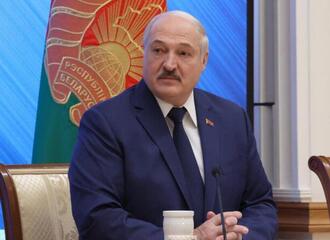На русском языке:
Фонд медицинской солидарности направил в Еврокомиссию доклад по ситуации с COVID-19 в Беларуси
На беларускай мове:
Фонд медыцынскай салідарнасці накіраваў у Еўракамісію даклад па сітуацыі з COVID-19 у Беларусі
Representatives of the Medical Solidarity Fund prepared a report on the current situation with COVID-19 in Belarus. It became the basis of a letter that was sent by the Office of Sviatlana Tsikhanouskaya, NAC, the Coordinating Council and the Medical Solidarity Fund to the EU leadership, EU member states and the leadership of COVAX with an appeal to urgently provide assistance to Belarus in the amount of at least one million doses of vaccines. The leaders of the democratic forces of Belarus issued a joint appeal, where they called for accepting the help of the international community and offered a tool that would help a million Belarusians, Tsikhanouskaya’s website says. The editors of motolko.help chose the most important points.
Morbidity and mortality
According to official data of the Ministry of Health, about 2,000 new cases and about 15 deaths are registered per day in the country. According to unofficial data, which comes from doctors of infectious departments and other specialists, only in Minsk about 4,000 positive results of PCR tests for SARS-CoV2 RNA are received daily. Covid-19 is also diagnosed by other criteria: a positive test for the SARS cov2 antigen, a typical CT-scan of the lungs plus clinical manifestations.
Doctors also report that every day in each of the hospitals repurposed for COVID-19 in Minsk, from 5 to 15 patients die. This suggests that the official number of deaths of Belarusians from COVID-19 is underestimated by more than 10 times.
Testing
Currently, level 1 contacts with clinical manifestations are subject to laboratory testing for COVID-19. Recently, mostly rapid tests for the antigen SARS-CoV2 began to be done. This approach, on the one hand, reduces the time of the study, but on the other hand reduces its effectiveness, since the rapid test has less sensitivity and specificity than PCR.
Vaccination
At the moment, the first dose of the vaccine was received by 28% of the population, fully vaccinated – 20%. Such an indicator is not able to provide population immunity that can stop the spread of the virus among the population and protect vulnerable unvaccinated people from infection.
Two vaccines are available in Belarus: Sputnik V (Gam-Covid-Vac) and VeroCell (Sinopharm). The main reason why Belarusians are not vaccinated is the reluctance to be vaccinated with vaccines available in Belarus. If vaccines of other manufacturers appeared in the country, Belarusians would decide to vaccinate. This underscores the need to ensure that Belarusians have access to foreign-made vaccines in order to vaccinate as much of the population as possible.
Re-profiled hospitals
Most hospitals have been re-profiled for COVID-19. In the capital only, more than half of the organizations providing inpatient care have been re-profiled to provide medical care to patients with COVID-19. This creates serious problems for the provision of not only planned, but also emergency medical care to patients without coronavirus infection. Many don’t get help at all.
Departments for COVID-19 patients are overloaded by more than 20%. Dining rooms, compartments in the corridors, operating rooms are equipped for hospital rooms. The number of rates of doctors and nurses is not increased, doctors work with great overload.
Medical oxygen
The problems of providing hospitals with medical oxygen have not yet been resolved. There’s no output points for oxygen supply in the rooms of canteens and corridors equipped into hospital rooms at all. There are not enough transport oxygen cylinders needed to transport oxygen-dependent patients for examinations, so the necessary diagnostics are often not performed.
Equipment, reagents, medicines
There’s a lack of laboratory reagents needed to assess disease severity and make clinical decisions in some facilities. Some hospitals have problems even with standard sets of biochemical markers. This makes it difficult to determine the severity of the condition and the choice of treatment tactics. There is still a shortage of drugs with proven effectiveness in treating patients with COVID-19.
There is a shortage of consumables for resuscitation equipment (breathing circuits, filters for ventilators, catheters, etc.). There are not enough portable ultrasound machines (in one of the large clinics in Minsk, there are only 2 such devices for almost 1000 beds). In some hospitals, new equipment is idle because there are no specialists trained to work with it.
Staffing shortage
Over the past year and a half, the need for medical workers in Belarus has increased from 3,000 to 10,000. In just one month of this year’s summer, there was a lack of 1,000 specialist doctors. Belarusian medicine is losing highly qualified specialists who already have experience. The average salary in health care in August 2021 was just over $500. This forces doctors and nurses to go abroad, where prospects for development and decent pay for their work open up for them. Or they leave medicine for other areas of activity.


